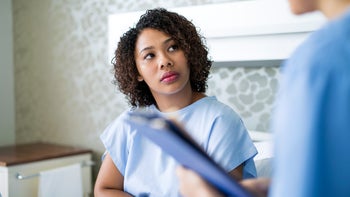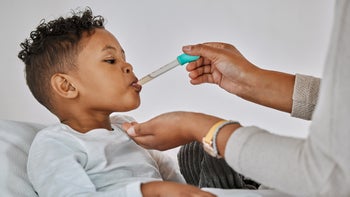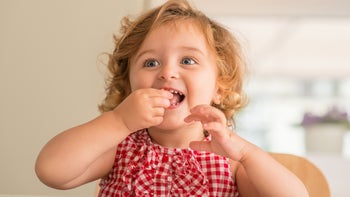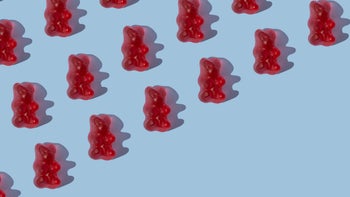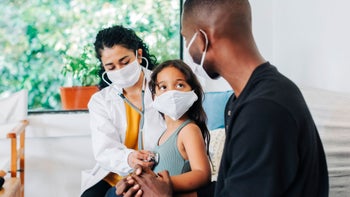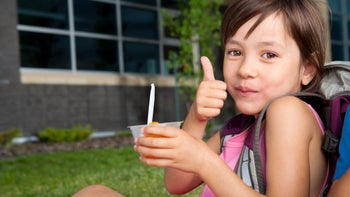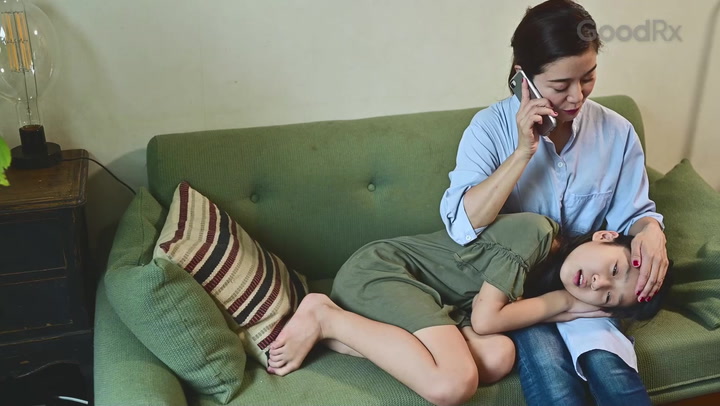
5 Natural Headache Remedies That Are Safe for Children
Key takeaways:
Most childhood headaches are mild and can be relieved using natural remedies.
Home remedies for headaches in kids include cool compresses, rest, and relaxation.
Over-the-counter (OTC) pain relievers, like acetaminophen and ibuprofen, may help a child’s headache. But your child shouldn’t use them more than twice a week.

“My head hurts!” You might hear your child say that after a long day at school. That’s not an unusual complaint. Headaches in kids are common. In fact, 20% of school-aged children are prone to getting headaches. That’s almost 10 million kids in the U.S. alone.
In most cases, kids experience primary headaches, like tension headaches and migraines. Secondary headaches are caused by medical conditions, like a viral illness or sinus infection. In rare cases, secondary headaches can be caused by a more serious medical problem. If you’re unsure why your child is having headaches, it’s best to contact their pediatrician for advice.
The good news is that mild, primary headaches can usually be managed at home. Let’s look at natural remedies you can try for headaches in kids.
Search and compare options
What are the best natural remedies for a child’s headache?
When your child complains of a headache, you’ll want to help them feel better fast. Here are five evidence-backed natural remedies for relieving headaches in kids.
1. Rest
For many children, sleep will stop a headache. Even if they’re unable to fall asleep, resting in a quiet, dark, room can help. Try to avoid letting your child read or watch TV while they rest, since this can make a headache worse. Experts recommend that children stick with a regular sleep routine, including consistent sleeping hours, to prevent headaches.
2. Cool compresses
While your child is lying in a quiet room with a headache, try putting a cool compress on their forehead or neck. Small studies in kids and adults have shown that cold therapy can help relieve headaches. You can use a cold, damp washcloth or an ice pack. If you’re using an ice pack, don’t place it directly on your child’s skin. Wrap it in a towel first. Putting ice directly on skin can cause skin damage.
3. Relaxation
Kids can use relaxation techniques to help relieve headaches. This works better for school-aged children and teens. Here are some options:
Progressive muscle relaxation: Kids should sit or lie comfortably. Ask them to take a few deep breaths. Next, ask them to tense and then relax muscles throughout the body. Start with the toes and work upward. This practice can help release tension.
Breathing exercises: Try techniques like diaphragmatic breathing (or “belly breathing”). During belly breathing, have your child put one hand on their chest and one hand on their belly. Encourage them to take slow, deep breaths and concentrate on air going into the belly.
Guided imagery: During guided imagery, have your kid visualize themselves in a calming environment, like their room or the beach. Ask them to use their five senses to describe what they see, hear, smell, taste, and feel.
Experts think these techniques may be especially helpful with tension-type headaches. But the evidence is mixed about how well they work.
Read more like this
Explore these related articles, suggested for readers like you.
4. Water and a snack
For some kids, missing a meal or not drinking enough may be enough to trigger a headache. Experts recommend that kids who are prone to headaches not skip meals. If you think your child’s headache may be related to not having enough to eat or drink, try giving them a snack and some water or an electrolyte drink.
How much water children should drink each day depends on their age. Another way to make sure your child is drinking enough water is to have them drink at least 10 oz of water for every 30 lbs they weigh.
5. Aromatherapy
Aromatherapy involves using essential oils derived from plant sources to treat various medical conditions. Lavender oil, in particular, has been used to treat conditions like anxiety and inflammation. One study found that inhaling lavender oil for 15 minutes reduced headache severity in adults.
Try placing a drop of lavender oil on your child’s pillow before they lie down to rest during a headache. You can also have them breathe vapor from a diffuser. If your child has asthma, it’s best to avoid using a diffuser and place 3 drops of lavender oil on their pillow instead.
What else can you give your child for a headache?
If these home remedies don’t seem to help, you can also try over-the-counter (OTC) pain relievers. Make sure to follow the dosing recommendations printed on the medication packaging. Here are examples of OTC pain relievers for kids.
Acetaminophen
Acetaminophen (Tylenol) is a common pain reliever. It’s safe and effective for treating childhood headaches and migraines.
You can find Tylenol in both liquid and chewable tablet forms. You can give it to your child every 4 to 6 hours. Tylenol dosing is based on your child’s age and weight. Children aged 12 and older can take adult Tylenol formulations. If you have questions about Tylenol dosing, check with your child’s pediatrician.
Ibuprofen
Ibuprofen (Motrin, Advil) is a nonsteroidal anti-inflammatory (NSAID) medicine. It may be more effective than acetaminophen for treating headaches.
Ibuprofen also comes in multiple forms for children. Like acetaminophen, dosing is based on your child’s age and weight. You can give it every 6 to 8 hours.
Naproxen
Naproxen (Aleve) is a more powerful NSAID. This OTC medication comes as a tablet. It’s only recommended for kids aged 12 years or older. You only need to give naproxen every 12 hours. NSAIDs can upset your child’s stomach, so it’s best to give the medication with food.
Remember, kids shouldn’t take aspirin or products that contain aspirin, like Excedrin Migraine. Aspirin can cause Reye’s syndrome, a neurologic condition that can lead to brain swelling and even death.
When should you seek medical care for a child’s headache?
Home remedies can be used for mild headaches. But there are times when you should seek care for your child’s headache.
Seek immediate medical care for your child if they have:
A headache with fever and a stiff neck
Confusion or difficulty waking up
Sudden, severe vomiting
Double vision
A severe first-time headache
Weakness or numbness on one side of the body
You should contact your child’s pediatrician if your child has these concerning experiences:
Early morning headaches
Headaches that awaken your child from sleep
Headaches that are becoming more severe and frequent
Headaches that get worse with light or noise
Headaches triggered by bearing down to have a bowel movement
Change in personality or school performance
The bottom line
Most headaches in kids are mild, and they don’t indicate that your child has a more serious medical condition. In fact, you can treat many kids with home remedies for headaches. Most headaches will get better in a few hours with time and rest. If natural remedies for headaches don’t work, try an OTC pain reliever. Contact your healthcare professional if your child is getting headaches more frequently or the headaches are becoming more severe.
Why trust our experts?



References
Aaltonen, K., et al. (2000). Migraine attacks and sleep in children. Cephalalgia.
American Migraine Foundation. (2020). How to create a routine that works for your child with migraine.
American Migraine Foundation. (2021). The relationship between sleep, headache, and pain.
American Migraine Foundation. (2023). Relaxation and paced breathing exercises for migraine.
Balekian, D., et al. (2020). Essential oil diffusers and asthma. American Academy of Allergy, Asthma & Immunology.
Celle, M. E., et al. (2010). Secondary headache in children. Neurological Sciences.
Children’s Health. (n.d.). Breathing exercises for kids.
Children’s Hospital of Orange County. (n.d.). Guided imagery.
Conti, R., et al. (2023). Red flags presented in children complaining of headache in paediatric emergency department. Children.
Esparham, A., et al. (2018). Pediatric headache clinic model: Implementation of integrative therapies in practice. Children.
HealthyChildren.org. (2016). Natural therapies for children with chronic headaches. American Academy of Pediatrics.
HealthyChildren.org. (2023). Ibuprofen dosing table for fever and pain. American Academy of Pediatrics.
Johns Hopkins All Children's Hospital. (n.d.). Headaches in children.
Kajjari, S., et al. (2022). The effects of lavender essential oil and its clinical implications in dentistry: A review. International Journal of Clinical Pediatric Dentistry.
Lewis, D. W. (2002). Headaches in children and adolescents. American Family Physician.
Millichap, J. G., et al. (2003). The diet factor in pediatric and adolescent migraine. Pediatric Neurology.
National Center for Complementary and Integrative Health. (2021). Headaches: What you need to know.
National Headache Foundation. (n.d.). Children’s headache disorders.
Nationwide Children’s Hospital. (n.d.). Headaches in children.
Mier, R. W., et al. (2018). Primary headaches. Dental Clinics of North America.
Norell, S. K., et al. (2023). Relaxation techniques. StatPearls.
Singh, R. K., et al. (2006). Head cooling for exercise-induced headache. Journal of Child Neurology.
Singh, S., et al. (2020). Acetaminophen or ibuprofen: A riddle worth solving in an acute attack of pediatric migraine. Indian Journal of Pediatrics.
Sprouse-Blum, A. S., et al. (2013). Randomized controlled trial: targeted neck cooling in the treatment of the migraine patient. Hawai'i Journal of Medicine & Public Health.
Teleanu, R. I., et al. (2016). Treatment of pediatric migraine: A review. Maedica.
Ucler, S., et al. (2006). Cold therapy in migraine patients: Open-label, non-controlled, pilot study. Evidence-Based Complementary and Alternative Medicine.







